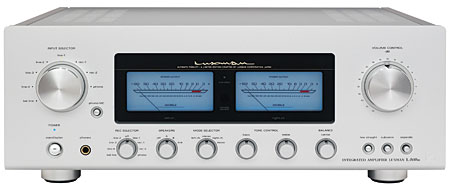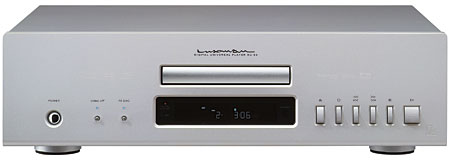| Columns Retired Columns & Blogs |
The Fifth Element #58 Page 2
After you've given the Gretchaninov and Janácek discs a few spins, and if you're up for even more fantastic choral singing fantastically recorded, the same forces heard in the Gretchaninov have released Sacred Choral Works (SACD/CD, Chandos CHSA 5055), a disc of music by Josef Rheinberger, about whose Abendlied "Bleib bei uns," as sung by the Cambridge Singers under John Rutter (Collegium COLCD 131), I have raved in these pages. The most important difference I think you'll want to know about is that, for most Westerners, the Gretchaninov really seems to come from an alternate universe—New Age-y, but in a good way. Rheinberger, despite occasional flashes of an appealing chromaticism, sounds like a part of the late-19th-century German mainstream that included Brahms. This Liechtensteiner had a long career as a teacher; his pupils included Engelbert Humperdinck (composer of the opera Hänsel und Gretel) and Wilhelm Furtwängler.
As long as I'm discussing recorded media and have already mentioned Brahms, I'll put in a plug for a charming 1951 black-and-white movie available for peanuts ($9.99 list) on budget DVD, and for even less from off-price or used sources: People Will Talk, starring Cary Grant and Jeanne Crain (DVD, 20th Century Fox Home Entertainment FXD000270). The film is equal parts romantic comedy and director Joseph L. Mankiewicz's somewhat heavy-handed but courageous attack on the attitudes then fueling McCarthyism. Grant stars as a Renaissance Man–style doctor and medical-school professor whose unconventional approaches cause a jealous faculty colleague to launch an investigation into his methods, and then an inquisition into his past. In the meantime, Grant falls for a beautiful undergraduate who turns out to be pregnant by her late boyfriend, who shipped out to Korea and was killed before anyone knew she was pregnant.
Apart from the fact that People Will Talk is a charming little movie that grows on you, Grant's character, Dr. Praetorius, also happens to be the conductor of the university orchestra (third-party sources credit Princeton as the location). In addition to some rehearsal scenes, the film ends with a performance of a choral version of the conclusion of Brahms's Academic Festival Overture, which I assume is something that music director Alfred Newman (Randy's uncle) whipped up for his and our amusement. It works quite well; someone should try it for real some day. After all, most of the tunes Brahms pastiched for the overture were student drinking songs.
Luxman Re-Revisited
I discussed Luxman's DU-50 SACD/CD/DVD/A player ($4990) and L505u solid-state integrated amplifier ($3690) in no fewer than five columns in 2009 (February, April, June, August, October). Furthermore, in the December 2009 issue I chose the L505u as my personal Editor's Choice for Product of the Year. My thoughts on the L505u after more than a year of living with it were:

Luxman's entry-level but heavyweight integrated amplifier delivers sonic authority, tactility, centeredness, continuity, easefulness, soundstage size, image specificity—you name it—in spades. It's the difference between "This is pretty good" and "This is addictive."
So if you're in the market for a near-universal player or a solid-state integrated amp in their price ranges, I don't really know what else I can say to nudge you in the direction of auditioning the DU-50 or the L505u, or both. By way of wrap-up, I'll put the models in a larger context here, and note a few things I might have not yet mentioned. If you're curious about weights, dimensions, etc., visit the US importer's website, or consult the 2010 Stereophile Buyer's Guide.
When US audiophiles think of the oldest firms still making high-performance audio equipment, they usually think of McIntosh Labs, founded in 1948. The UK's Quad traces its corporate origins back to 1936. Japan's Luxman, however, has them both beat: Luxman began making transformers and switches for radio sets in 1925. This is to the good; the company obviously has a sense of history. The iffy part is that Luxman's product line, which blends modern and heritage products, is a bit quirkily confusing. Luxman is by no means alone in having a product line that does not make intuitive sense to the uninitiated. A prime example is Harbeth's having two loudspeakers both costing $5000/pair, the Monitor 30 and the Super HL5.

To give one last example of that benchmarking, I played the SACD-only version of Miles Davis' Kind of Blue on both the DU-50 with L505u ($8680 together) and the high-value, one-box Denon RCD-CX1 SACD/CD receiver ($1500), which I wrote about in December. With ATC's excellent SCM 11 loudspeakers driven by the Luxman combo, the string bass was robust, the trumpet clear and smooth, there was no tape hiss, the edgy yelps from Coltrane's tenor sax had bite, and the music in general sounded very lively, with great forward propulsion. Switching the ATCs to the Denon, tape hiss was audible, the piano sounded a bit thinner, the string bass was not as authoritative, the trumpet was not as clear, and the horns didn't sound as incisively real.
Suffice it to say that I think the Luxman L505u is a screaming bargain. I used it with most of the budget loudspeakers I've covered over the last 18 months, and often with Harbeth's Compact 7s, again as a benchmark. As a bit of a stress test, I took the L505u and DU-50 to my friend Bob Saglio's place, to try them out with a pair of Wilson Audio Sophia IIs that were hanging around, waiting for someone to fall in love with them. What a great and, in the grand scheme of things, reasonably priced setup. The L505u had no problem at all driving the Sophia IIs with big pipe-organ, orchestral, or solo-piano tracks. I don't think I ever had the L505u's volume knob past the 11:00 o'clock position for sustained listening at any time, even with the Sophias. There seems to be a lot more power on tap than I would ever use. I used both balanced and single-ended connections between the two components and heard not much of a difference, if any.
A reader asked via email about the L505u's headphone jack. In direct comparison with Grace Design's m902 headphone amplifier, and using the DU-50 as a transport, while the difference was not night-and-day, the Grace did have more body and a greater sense of space. (And yes, I did first disable the m902's proprietary crossfeed circuit!)
Both Luxman models have lights on their rear panels to alert you if your house's AC outlets have neutral wired to hot, or vice versa—in other words, inverted AC polarity. This is just another example of how much real-world experience has gone into these components, which are completely ready for prime time.
The US importer sets up the DU-50 to play the stereo DSD layer of multichannel SACD/CDs as the default. However, as far as I can tell, changing this requires that a TV be connected to the player, so you can navigate among the menus.
- Log in or register to post comments




































